Bagna cauda Piedmontese is a super-savory, classic Italian dip. Pair it with veggies and crusty bread for a stellar party platter. Or use it as a sauce for pasta, fish, or chicken.
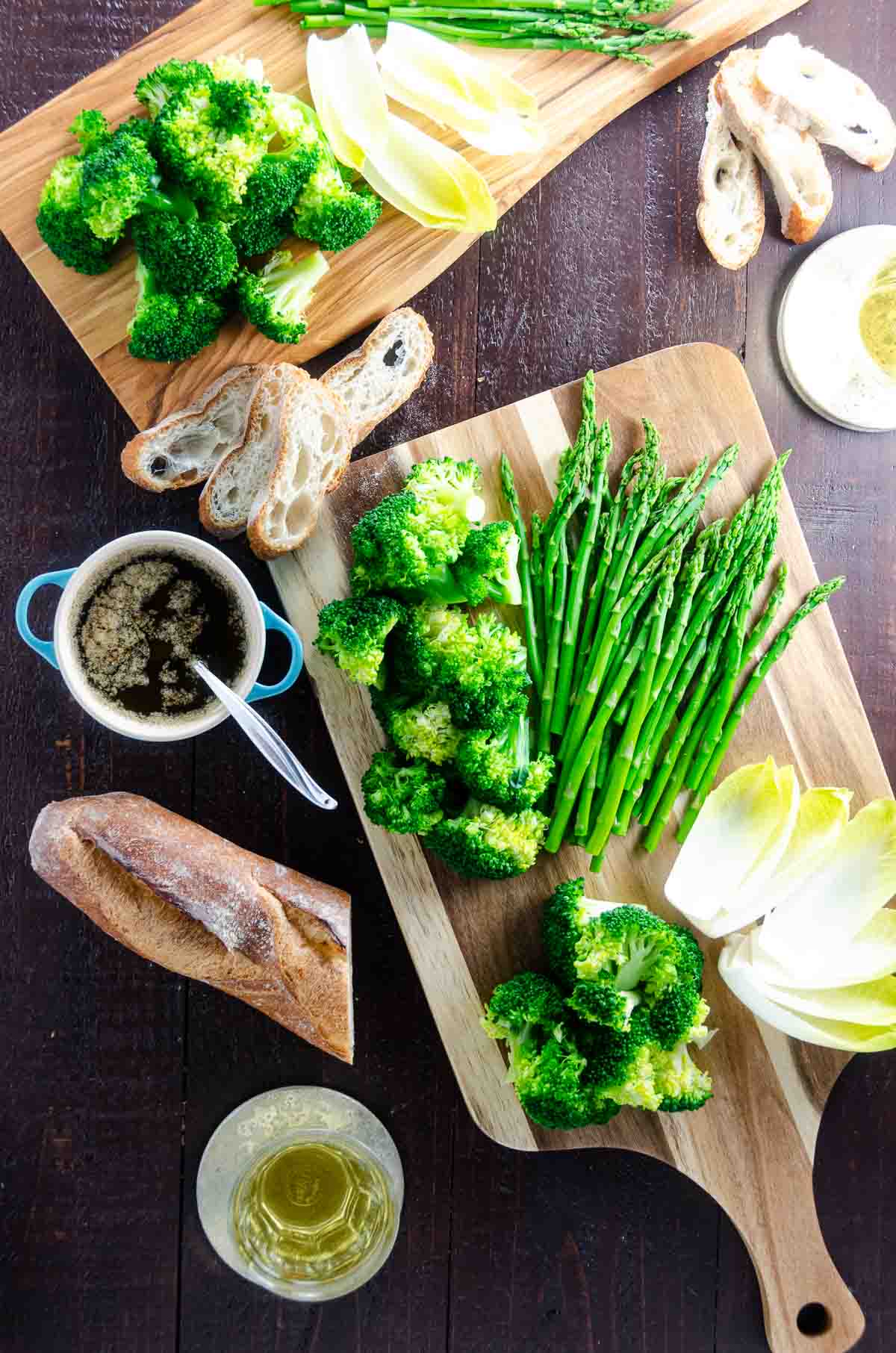
Why we love this recipe
Bagna cauda means "hot dip" or "hot bath" in Italian, and without getting too weird (although that ship sailed decades ago), it’s a hot bath I’d be happy to take just about any time. Technically the bath is for the bread and vegetables, but you know what? It’s all good.
This recipe:
- Stays true to its Piedmontese origins
- Works beautifully with any type of good, crusty bread and seasonal vegetables
- Comes together in just a few minutes
- Brings a deep, savory flavor profile to the table
I first published this recipe, adapted from Marcella Hazan, here and on Serious Eats way back in 2010. I've since updated the post for clarity, but the recipe remains the same.
What you'll need
Here's a glance at the ingredients you'll need to make this recipe.
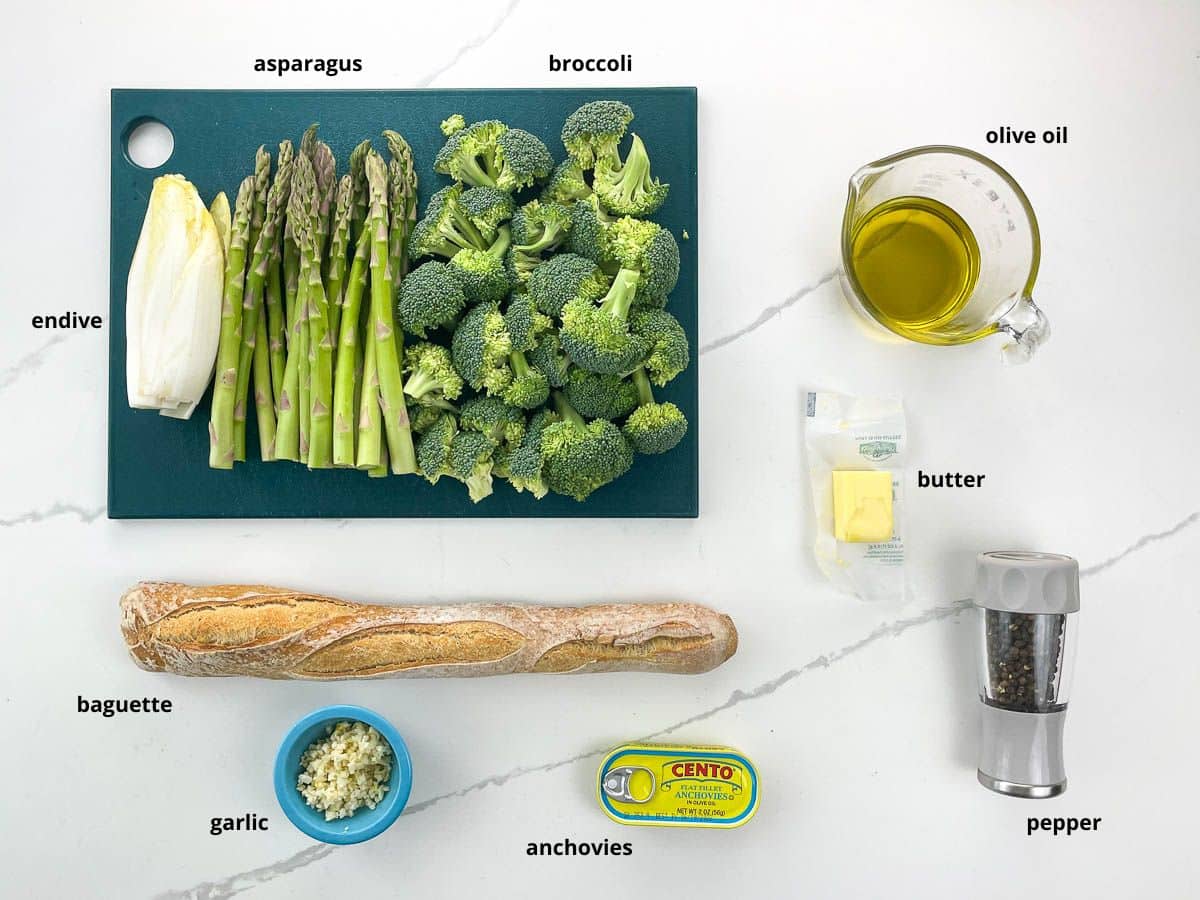
- You'll use lots of minced fresh garlic. The amount suggested gives the sauce a nice balance, but you can feel free to add more with abandon if you like.
- A humble tin of oil-packed anchovies packs a super-savory punch.
- Use a really good-quality butter if you can. Here and virtually everywhere, I start with a cultured, salted butter from grass-fed cows. This sounds fancy but doesn't have to be. Kerrygold, for example, is sold in most supermarkets at a reasonable price.
- Use a good-quality extra-virgin olive oil, since you'll really taste it. That said, since you'll be heating it, there's no need to tote out your fancy unfiltered versions with the perfect level of astringency.
- You can use whatever vegetables you like, making bagna cauda a year-round option. Veggies with a little cup (like endive) or some nooks and crannies (like broccoli and asparagus tips) work best for catching the sauce.
- Any type of good crusty bread will pair nicely with this dip. I particularly love a sourdough baguette, whose tight crumb structure and bold flavor both work especially well.
How to make it
Here's an overview of what you'll do to make a super-savory batch of bagna cauda Piedmontese and turn it into a gorgeous appetizer platter. You can see the steps in action in the video that accompanies this post, and get all the details in the recipe card below.
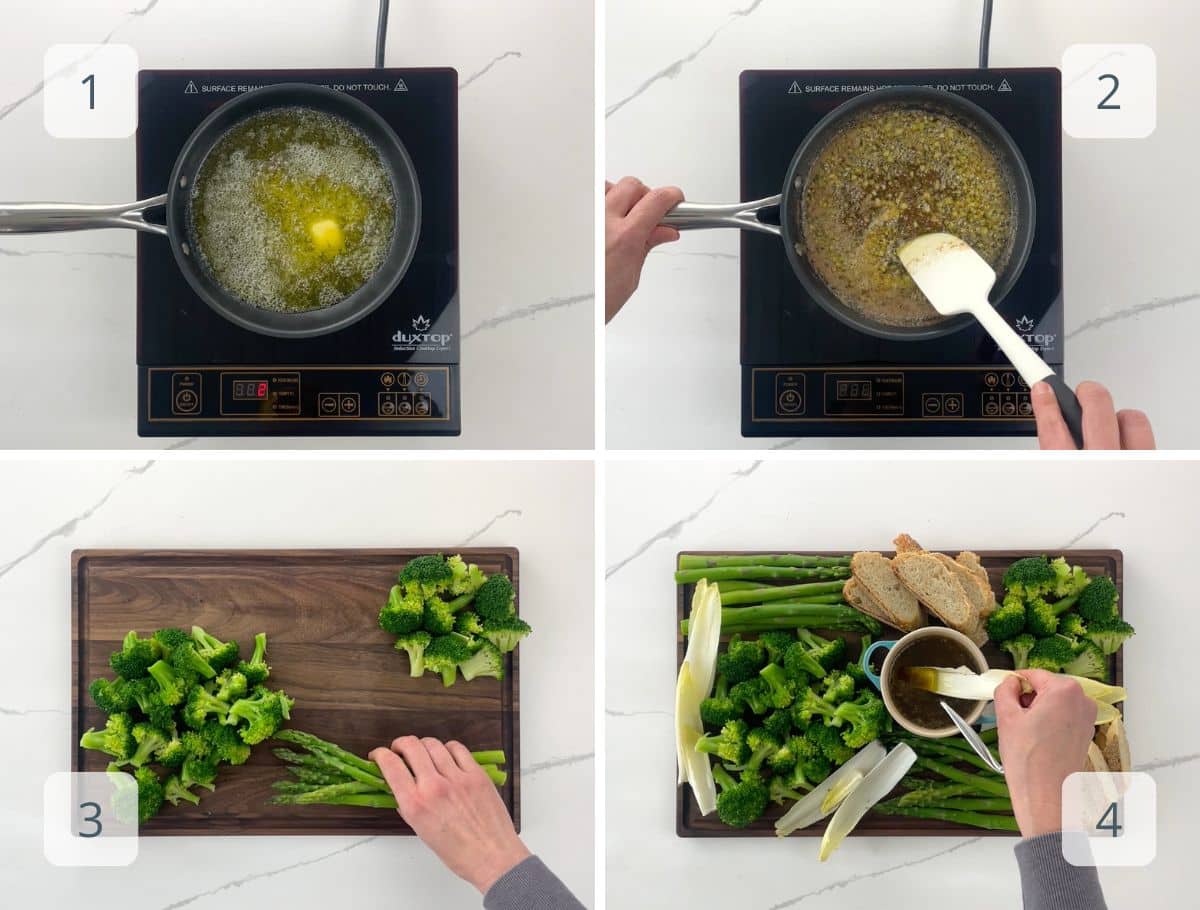
- First you'll warm the butter and olive oil.
- Add the anchovies and garlic and cook for a few minutes, until the anchovies have mostly melted into the sauce.
- Arrange the veggies and bread slices on a platter.
- Nestle the bagna cauda onto the platter and serve. That's it!
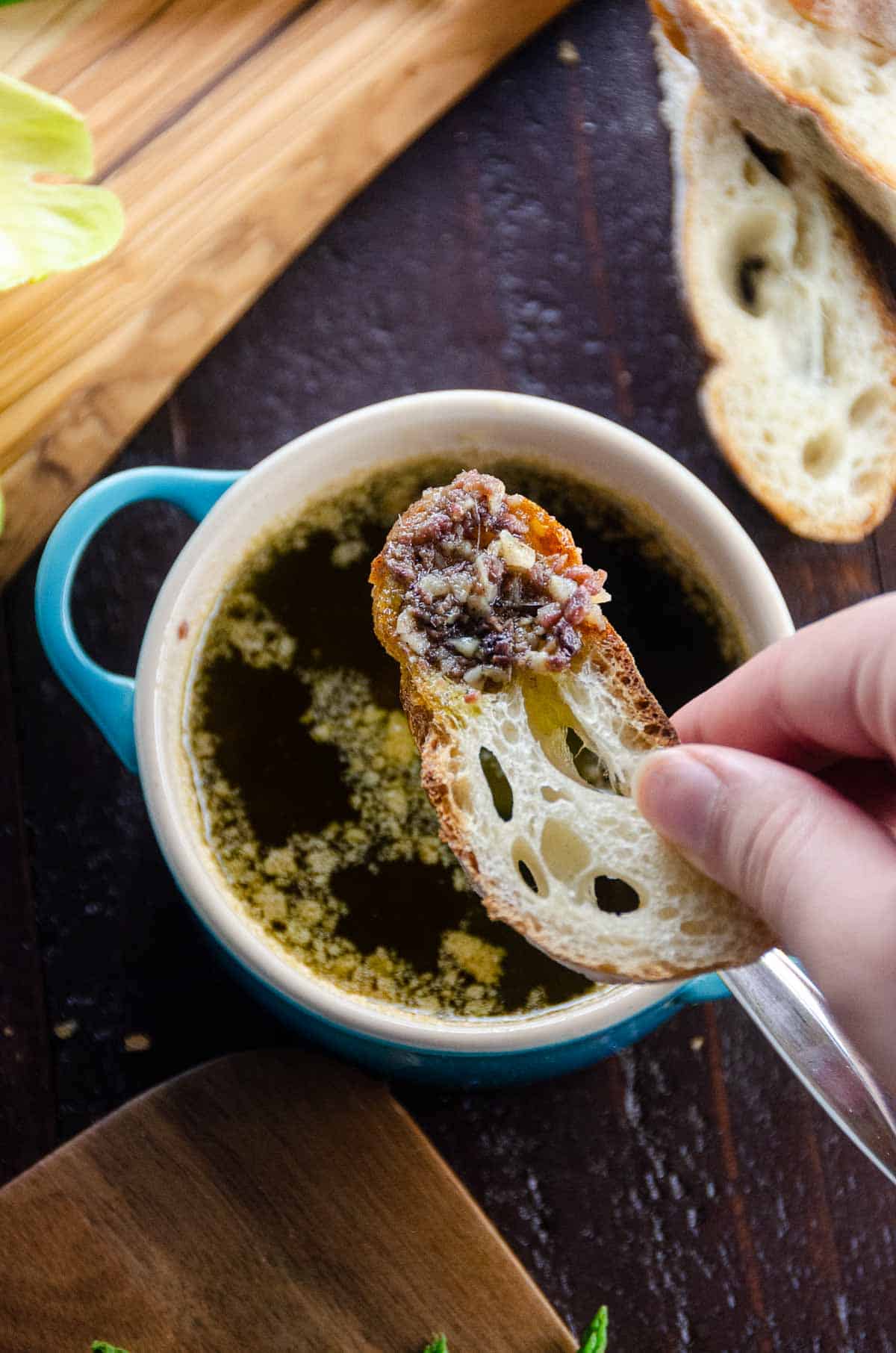
Expert tips and FAQs
Bagna cauda takes only a few minutes to come together, and it wants to be served warm — so I typically make it shortly before serving. That said, you don't have to.
You can either mince the garlic and anchovies up to a day in advance and store in an airtight container in the fridge, then make the dip shortly before serving, or make the whole shebang up to 24 hours in advance and reheat right on the stovetop at serving time.
You can trim and blanch the vegetables in the same timeframe if you like.
More favorite epic appetizer platters
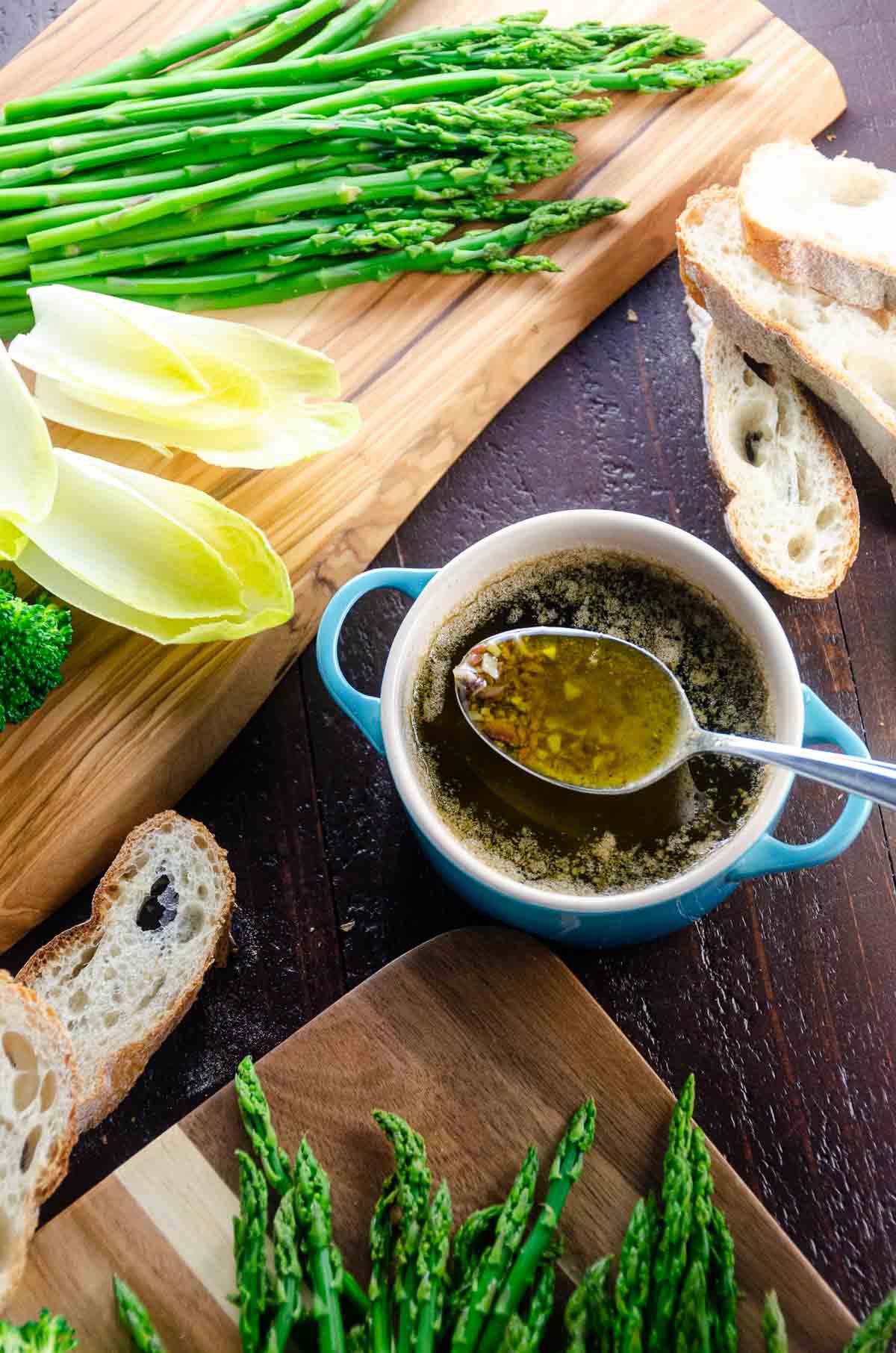
Hungry for more?
Subscribe to Umami Girl's email updates, and follow along on Instagram.
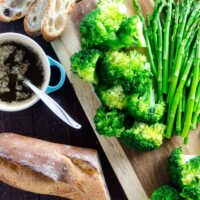
Bagna Cauda Piedmontese
Ingredients
To serve
- 1 head broccoli (cut into bite-sized florets)
- 1 bunch asparagus (ends trimmed)
- 1 head Belgian endive (leaves separated)
- 1 baguette (sliced)
For the bagna cauda
- ½ cup (120 ml) extra-virgin olive oil
- 3 tablespoons (42 grams) butter
- 2 ounces (56 grams) oil-packed anchovy fillets, drained and minced
- 4 medium garlic cloves (minced)
- ¼ teaspoon freshly ground black pepper
Instructions
- Fill a large pot halfway with water. Add 1 tablespoon salt. Bring water to a boil over high heat.
- Meanwhile, fill a large bowl with ice water.
- When water boils, add broccoli and cook for one to two minutes, until bright green and not raw. Remove with a strainer to ice water.
- Repeat with asparagus.
- When vegetables are cool, blot dry and arrange on a large platter with endive and bread slices.
- In a small pot, heat the olive oil and butter over medium heat until the butter starts to foam.
- Add anchovy and garlic and cook, mashing anchovy against bottom and sides of pot with a spoon, until most of the anchovy has dissolved into the sauce, about two minutes.
- Remove from heat, season to taste with pepper, and pour into a small bowl (or serve directly from pot).
- Nestle bowl onto serving platter and serve warm.
Notes
- You can use whatever vegetables you like, making bagna cauda a year-round option. Veggies with a little cup (like endive) or some nooks and crannies (like broccoli and asparagus tips) work best to catch the sauce.
- Any type of good crusty bread will pair nicely with this dip. I particularly love a sourdough baguette, whose tight crumb structure and bold flavor both work especially well.
- Use a really good-quality butter if you can. Here and virtually everywhere, I start with a cultured, salted butter from grass-fed cows. This sounds fancy but doesn't have to be. Kerrygold, for example, is sold in most supermarkets at a reasonable price.
- Use a good-quality extra-virgin olive oil, since you'll really taste it. That said, since you'll be heating it, there's no need to tote out your fancy unfiltered versions with the perfect level of astringency.
- A humble tin of oil-packed anchovies packs a super-savory punch.
- You'll use lots of minced fresh garlic. The amount suggested gives the sauce a nice balance, but you can feel free to add more with abandon.
- If you like, you can set the pot over a little tea light or sterno burner to keep the bagna cauda warm. I don't usually bother.
- Bagna cauda takes only a few minutes to come together, and it wants to be served warm — so I typically make it shortly before serving. That said, you don't have to. You can either mince the garlic and anchovies up to a day in advance and store in an airtight container in the fridge, then make the dip shortly before serving, or make the whole shebang up to 24 hours in advance and reheat right on the stovetop at serving time. You can trim and blanch the vegetables in the same timeframe if you like.
Nutrition
Hungry for more?
Subscribe to Umami Girl's email updates, and follow along on Instagram.


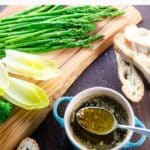
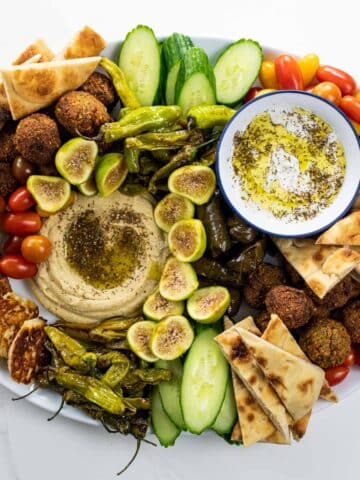




Anonymous says
Anonymous says
Anonymous says
Anonymous says